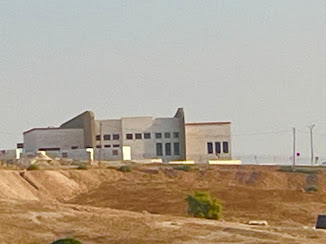The fences with barbed wire are everywhere, a tangible separation to remind them all, Palestinian and Israeli alike, that there is a difference between the two peoples and their rights as humans in this land.
Chunks of the West Bank have been cut into pieces specifically to isolate communities of Palestinians and separate them from their Jewish brothers and sisters. The awe-inspiring land is interrupted by metal, plain concrete structures reminiscent of prisons, both in design and by the surrounding “security” fences.
What is it that the Israeli government fears? They say it is the terrorism that plagues the Palestinian territory, but the indigenous people here are amongst the most welcoming and gentle people: men embracing each other or walking arm in arm; women welcoming us into their homes and hearts. There is no judgement, no difficulty, no barrier in our connection. There is only love and camaraderie. These are a people most hospitable in their acceptance of others.
I believe this government fears equal rights. I believe they fear inclusion. I believe they fear fellowship. I believe they fear the humanization of marginalized people. I believe they fear the things that would make theft and oppression unpalatable for the masses. I do not believe they fear a concocted terrorism, simply not here, among these gentle people, just trying to live in peace.
I’ve come to the realization that the fences keep both Israelis and Palestinians locked in. Locked into the separation. Locked into the beliefs. Locked into apartheid and disdain. And whom does it benefit? From where I stand, it seems as though both groups are worse off for it. The land and the culture suffer with the humans the fences oppress on both sides. The propaganda of fear controls the poisonous narrative of the degradation of an entire race of people.
Two worlds divided by roads and so much more. My eyes cannot believe what they see, my brain cannot comprehend it and my heart cannot accept the fear and these apathies invented by greed and oppression. Something has to change.
The walls must come down.





